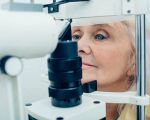- 1-Understanding-Eye-Strain-in-Office-Workers
- 2-Adjusting-Workstation-Setup-for-Eye-Comfort
- 3-Implementing-the-20-20-20-Rule
- 4-Importance-of-Proper-Lighting-and-Screen-Brightness
- 5-Benefits-of-Regular-Eye-Exams-and-Eye-Care
- 6-Real-World-Examples-of-Effective-Eye-Strain-Prevention
- 7-Using-Technology-and-Products-to-Protect-Eyes
1. Understanding Eye Strain in Office Workers
Eye strain, commonly known as digital eye strain or computer vision syndrome, affects millions of office workers who spend long hours in front of screens. It manifests through symptoms such as dry eyes, headaches, blurred vision, and neck or shoulder pain. Understanding the causes of eye strain is the first step in prevention. Continuous focus on screens reduces blink rate and causes eye muscles to fatigue.
Awareness of these symptoms and early intervention can prevent long-term discomfort. Research shows that nearly 60% of office workers experience some form of eye strain, emphasizing the need for effective strategies to protect vision health during the workday.
2. Adjusting Workstation Setup for Eye Comfort
One of the most impactful ways to prevent eye strain is to optimize your workstation setup. Position your monitor about an arm's length away, with the top of the screen at or slightly below eye level. This reduces excessive upward or downward gaze that strains eye muscles and neck.
Using an adjustable chair and maintaining good posture also supports eye comfort. Ensuring that your monitor is clean and free of glare minimizes unnecessary eye effort. Ergonomic adjustments tailored to individual needs can drastically reduce fatigue and increase productivity.
3. Implementing the 20-20-20 Rule
The 20-20-20 rule is a simple yet effective technique to reduce eye strain. Every 20 minutes, look at something 20 feet away for at least 20 seconds. This practice relaxes the eye muscles and helps restore focus. Many office workers report noticeable relief after consistently applying this rule throughout their workday.
Incorporating this habit into daily routines requires reminders or timers but pays off by reducing discomfort and improving overall eye health.
4. Importance of Proper Lighting and Screen Brightness
Lighting plays a crucial role in eye strain prevention. Overly bright or dim environments force eyes to work harder, leading to fatigue. Adjust ambient lighting to avoid reflections and glare on your screen. Use window shades or anti-glare filters if necessary.
Screen brightness should be balanced with surrounding light conditions. Many devices now offer automatic brightness adjustment or “night mode” to reduce blue light exposure, which contributes to eye discomfort and disrupts sleep patterns.
5. Benefits of Regular Eye Exams and Eye Care
Regular eye exams help detect underlying vision issues that can worsen eye strain. Eye care professionals can prescribe corrective lenses designed for computer work, such as anti-reflective coatings or blue light filters. Preventative care also includes educating office workers on eye health and proper screen habits.
Early detection and tailored treatments ensure long-term vision preservation and reduce the risk of chronic eye problems.
6. Real World Examples of Effective Eye Strain Prevention
Consider Emily, a graphic designer who struggled with daily headaches and dry eyes. After consulting with an eye specialist and implementing workstation changes including the 20-20-20 rule and adjusted lighting, she experienced a dramatic reduction in symptoms. Her productivity and comfort increased, illustrating how practical steps can transform work life.
Similarly, a corporate office that introduced mandatory screen breaks and provided employees with blue light glasses saw a measurable drop in reported eye strain cases, fostering a healthier workplace environment.
7. Using Technology and Products to Protect Eyes
Several products can help office workers prevent eye strain. Blue light filtering glasses, screen protectors, and specialized software that adjusts display settings are popular options. Ergonomic accessories like monitor stands and adjustable lighting systems also contribute to eye comfort.
Combining these tools with healthy habits maximizes protection. For those seeking personalized recommendations and quality eye care products, visiting Eye Docs can provide expert advice and trusted solutions tailored to office workers’ needs.








